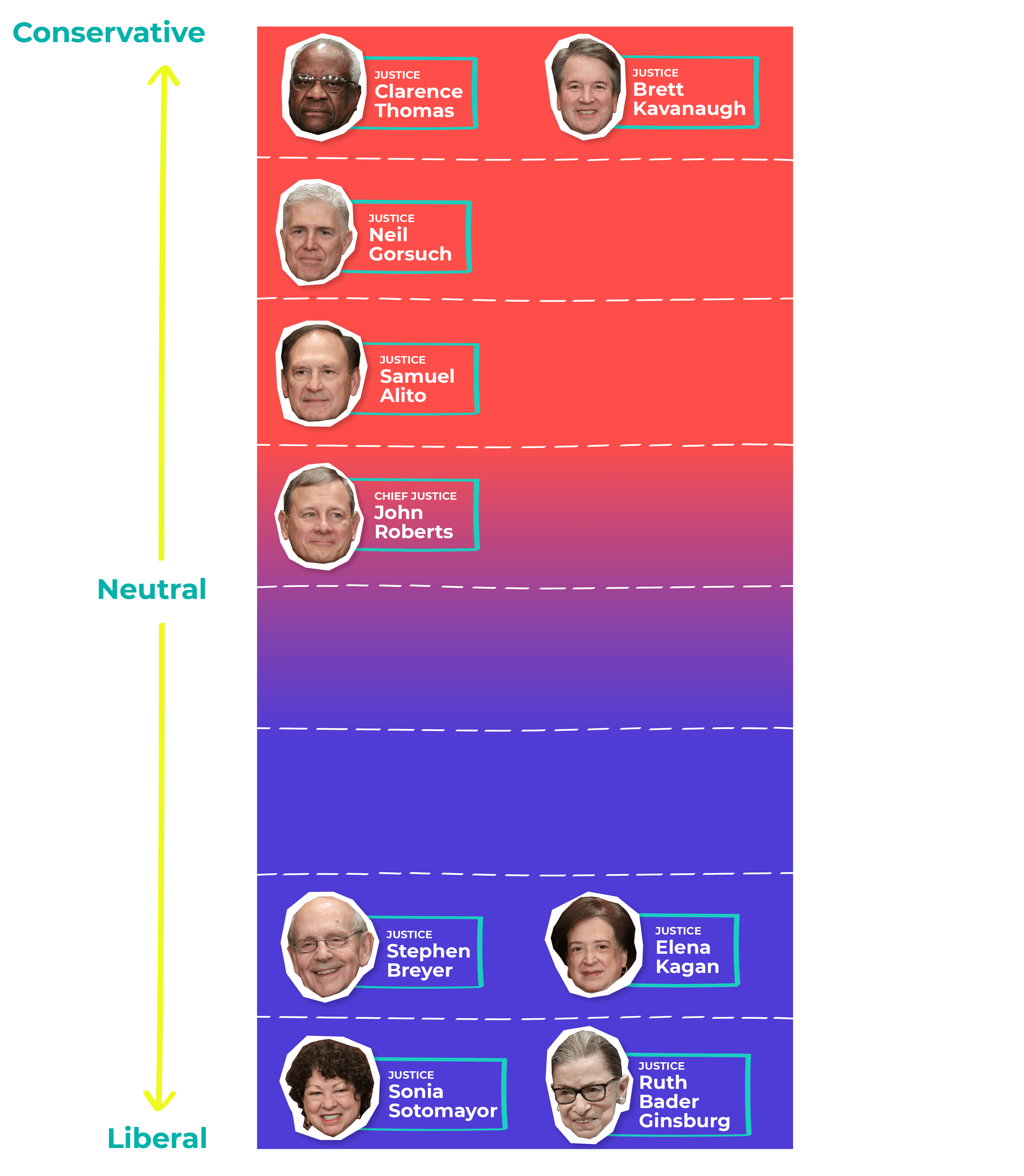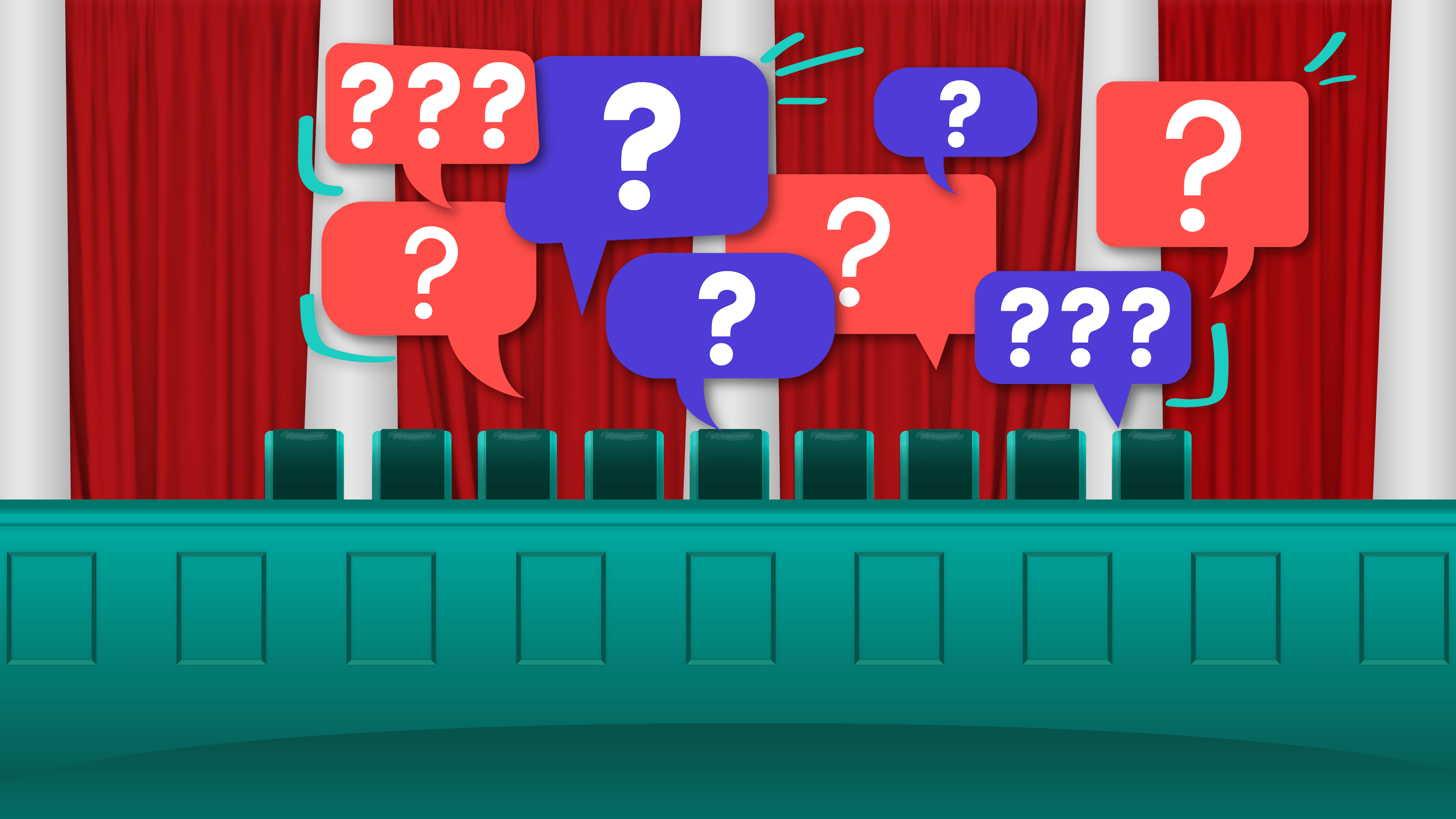The Story
The Supreme Court has been a thing since the 1700s. But lately, there have been questions around whether it needs a revamp.
Let’s start with some background, shall we?
You got it. The Constitution established the Supreme Court as part of the US’s checks and balances system...but it didn’t really elaborate on the details. So Congress stepped up to the plate and passed the Judiciary Act of 1789 that got into the specifics, including that there would be six justices. In 1869, Congress settled on nine justices. That broke down to eight associate justices and one chief justice, which is still how it’s structured today.
What’s the difference between the associates and chief?
The chief justice pretty much oversees everything that goes on in the court. From writing opinions to the administrative stuff. And they traditionally administer the oath of office to the president and VP at their inauguration.
How exactly does one become a justice? Asking for a friend.
The Constitution doesn’t list any requirements. But all justices have some kind of law experience (think: previous jobs as federal judges). When a spot on the bench opens up, the president nominates someone. Then the Senate has to hold confirmation hearings and vote on whether to give that person their robes.
And how do spots open on the bench?
The Constitution says that justices “shall hold their Offices during good Behaviour.” 2019 translation: they’re appointed for life, but they may pass away while serving, retire or be forced out by impeachment (only one Supreme Court justice was impeached). On average, justices serve about 16 years and a new one comes onto the bench about every two years.
Can the court operate without all nine justices?
Technically, yes. But if there are an even number of justices, decisions can end up in a tie, leaving a case deadlocked. Speaking of, let’s take a look at the current justices and where they stand on the political spectrum.

So what’s day-to-day life like for a justice?
Every year, the Supremes get asked to hear thousands of cases. But they only can take up dozens, because time. The cases they take up are ones that go through lower courts but get appealed. They start hearing arguments in October and hand out rulings through the end of June. And yes, that does mean they get summer vacation. This term, some cases that’ll likely make headlines are…
Whether President Trump can end DACA – the program protecting people who were illegally brought to the US as kids from deportation
Whether the Civil Rights Act of 1964 protects the LGBTQ+ community from workplace discrimination
Whether doctors in Louisiana can be barred from performing abortions if they don't have admitting privileges at a nearby hospital. That'll be the court's first abortion case since it turned solidly conservative with Justice Brett Kavanaugh last year
SCOTUS’s job is to decide whether a previous decision is constitutional, regardless of where the justices stand politically. But some worry that that’s not the case (no pun intended) anymore. One example: one poll says that almost half of Americans think the court is politically biased.
Why’s that?
We get into that, the impact of the Supreme Court, and more in theSkimm app. Every week, the app goes deep on a different news topic to give you the context you need to understand what's going on in the world. Download the app now and you get the first week free.
Live Smarter
Sign up for the Daily Skimm email newsletter. Delivered to your inbox every morning and prepares you for your day in minutes.






